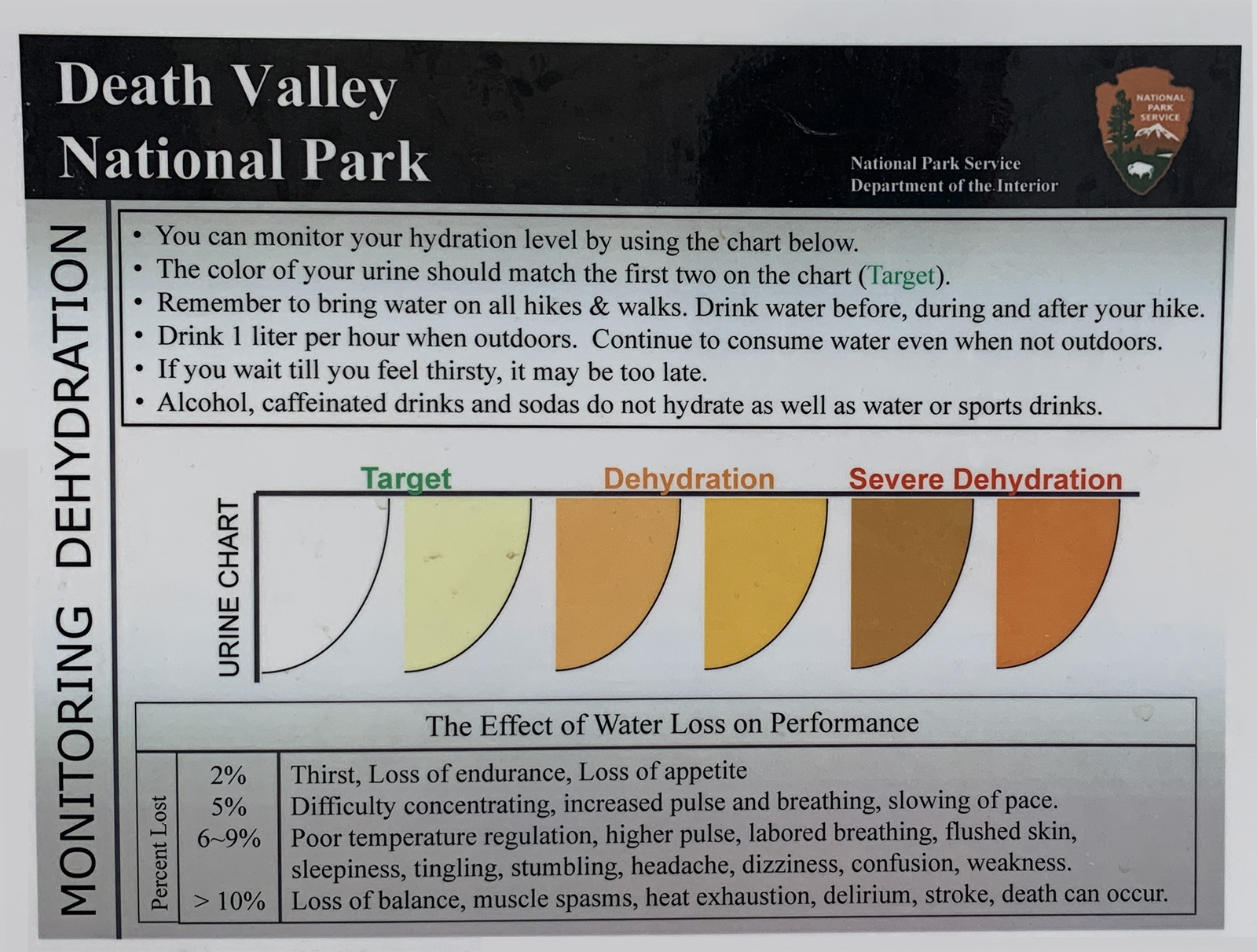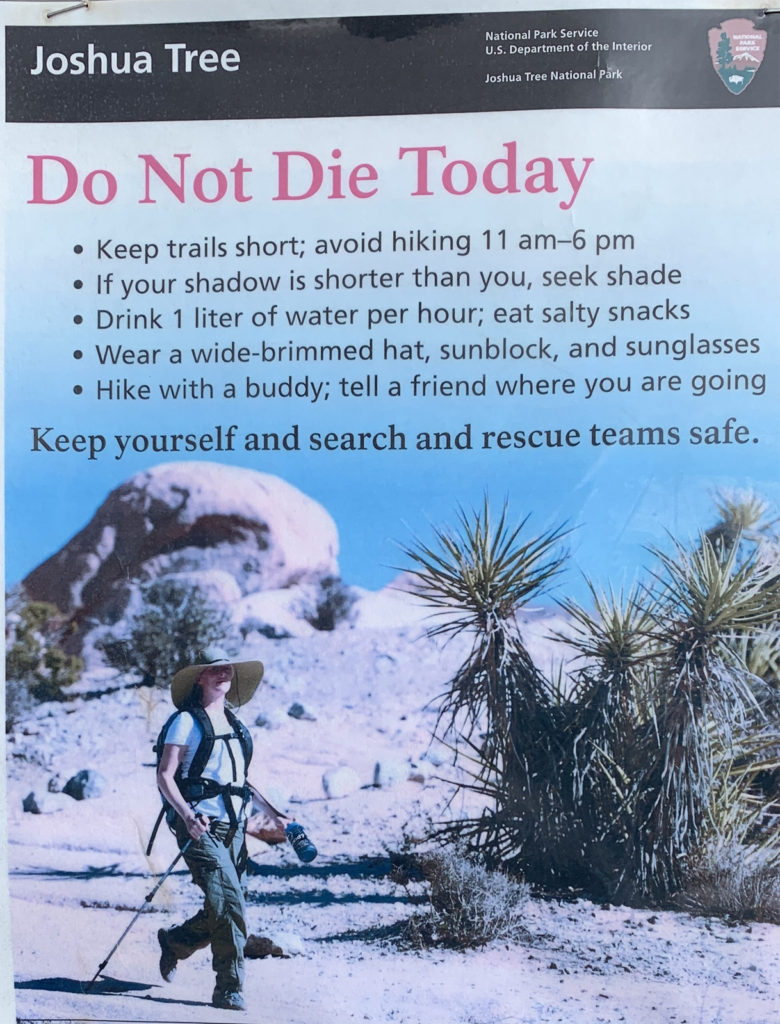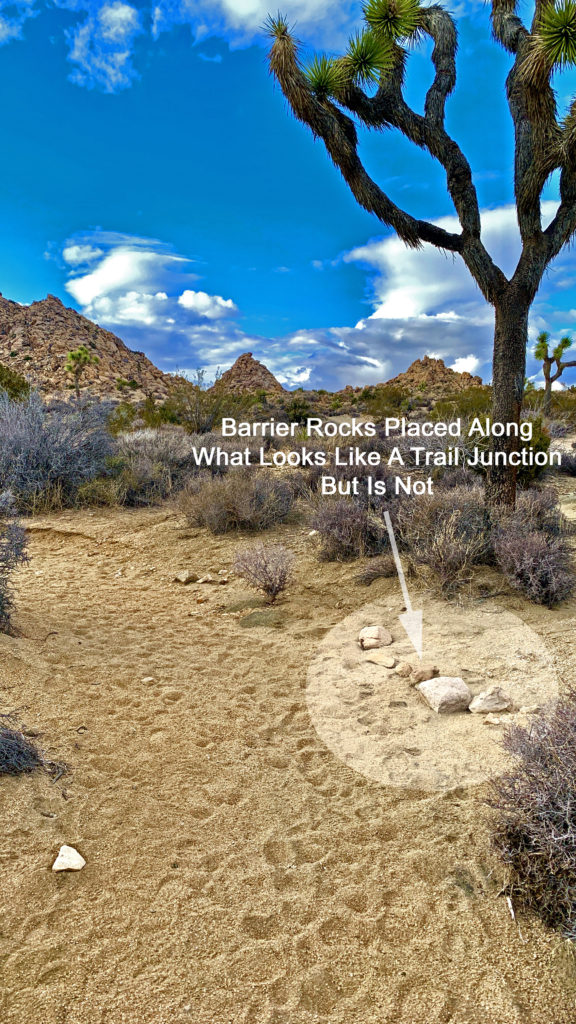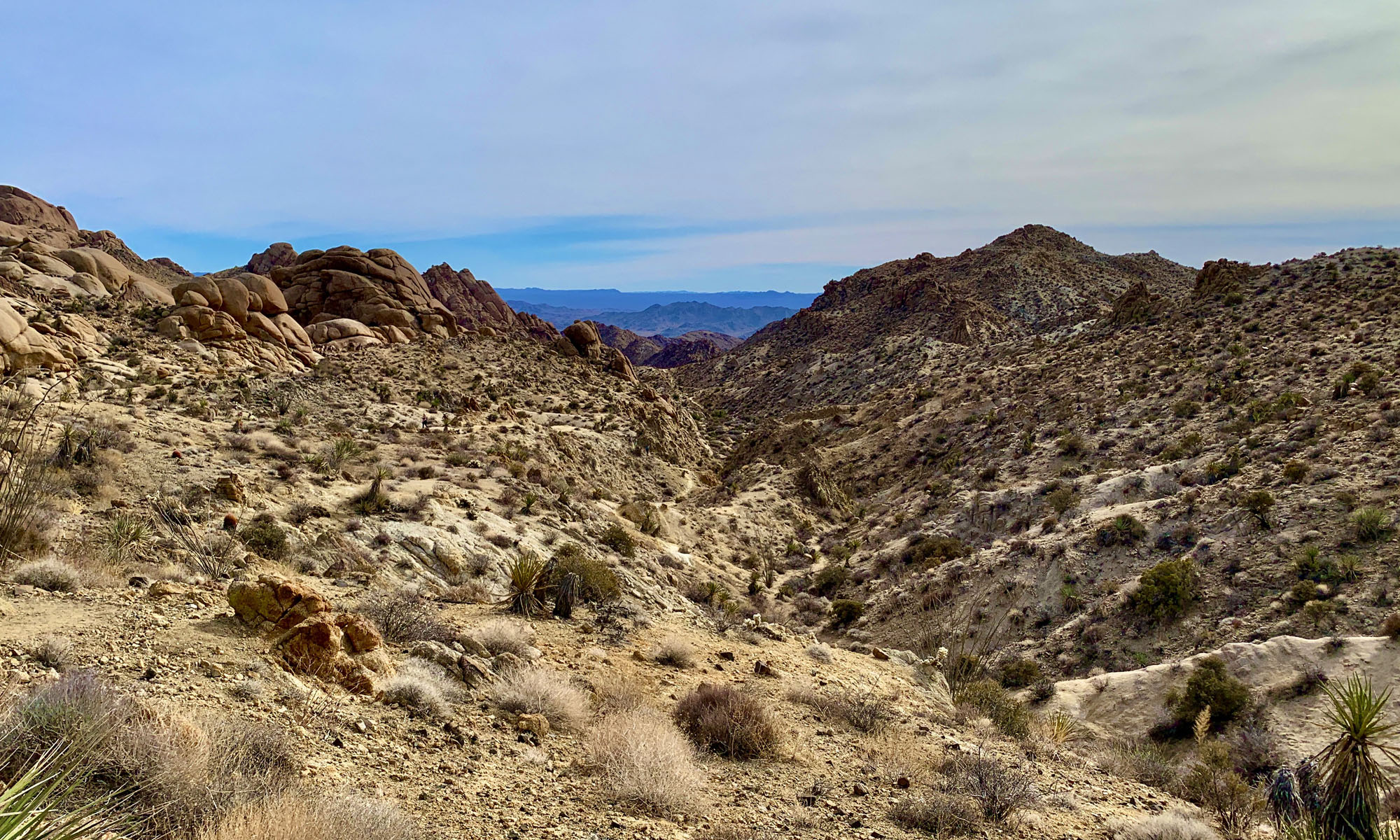
Starting this week and over the next few weeks I’m going to write about some hiking we did in Death Valley and Joshua Tree National Parks. While I strongly encourage anybody to visit and hike those parks, I want to talk about the dangers of those two parks because while beautiful, their environments can be very dangerous and even fatal if precautions are not taken.
We were in both parks in January of last year when we thought it would be cooler and also in February in Death Valley the year before. While these are the cooler months, they can still be hot and dehydrating. One of the things I’ve never seen before but was glad to see what a chart with depicting urine colors showing different levels of dehydration on it in the men’s room at the visitor center at Death Valley National Park.

If you plan to hike in either park, water is extremely scarce, and in most cases you will not come across any while out day hiking. In Death Valley, it was very dry when we were there. It is extremely easy to dehydrate and get into trouble there. What’s worse is cell service was also very scarce in the park, so it’s difficult to call for help if needed. A locator beacon or other satellite communicator could come in very handy if bad things happened.
From 2007-2018, there were 34 deaths in Death Valley National Park, and in 2021 there were six deaths in the park. The sixth one was in November 2021 and was a 27-year-old experienced hiker found 1.7 miles from the trailhead. Her death was heat related.
Joshua Tree National Park carries with it the same potential dehydration issues Death Valley does, but it’s also very easy to lose your way and become lost and then dehydrated in the park. There have been fatalities in the park because of this. Between 2007-2018 there have been 22 deaths in Joshua Tree.

When hiking in Joshua Tree, it is easier than you think to stray from the trail. In many places, barriers such as rocks have been placed along trails where it looks like it might go, such as what looks like a junction when it really is not. People have hiked off on what looks like a trail only to discover later they are lost. Unless you know from where you came, it is easy to get disoriented and lose your way back. I do have a post that discusses getting lost that you may find useful.

The U.S. Forest Service offers some good tips if you find you that you are lost.
Gore-Tex also offers some useful information about getting lost.
Enjoy the parks, but be careful. Be sure and tell someone where you are going and when they can expect to hear back from you.
